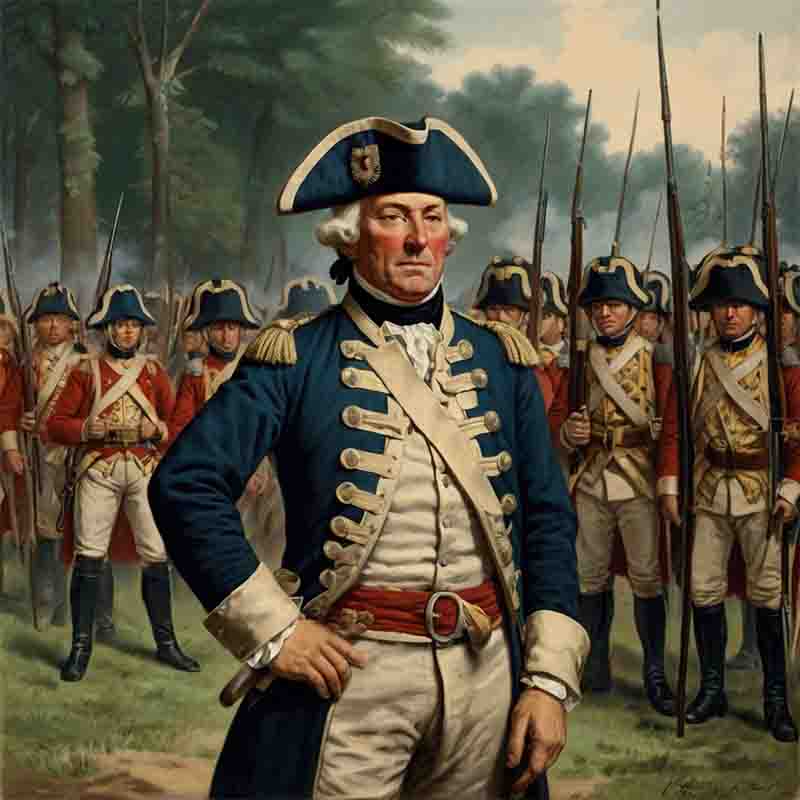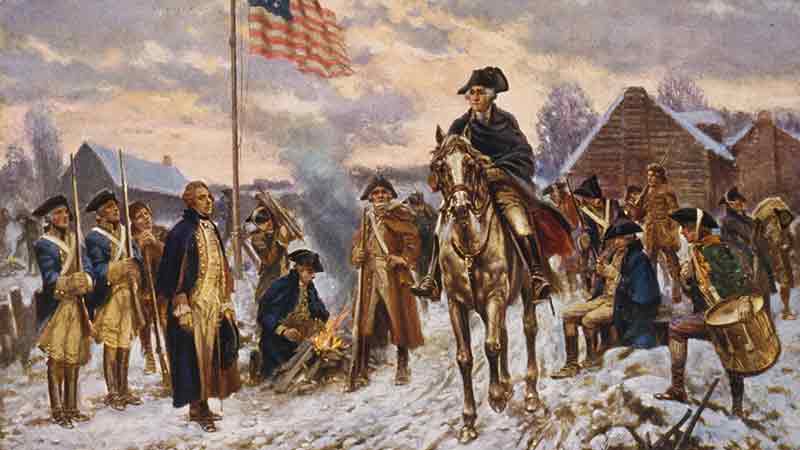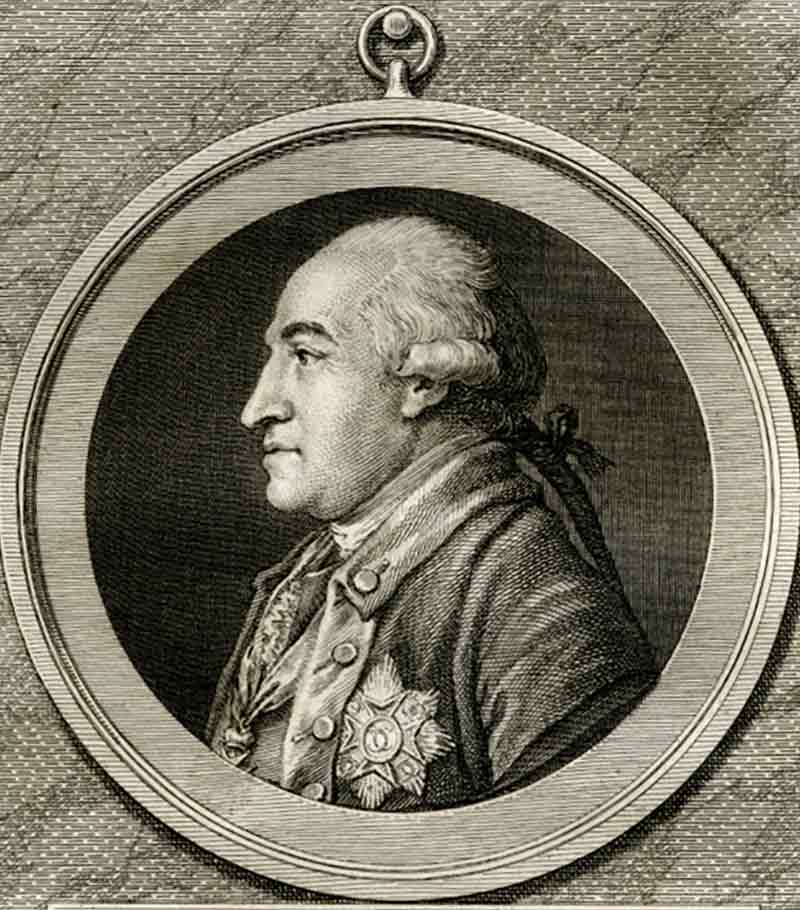German Soldiers in the American Revolution
At the time of the American War of Independence an estimated 225,000 to 250,000 Germans lived in the colonies. German American soldiers were involved on both sides. The majority of them fought alongside the British. On the American side, German immigrants and their descendants contributed to the war effort in various ways, including serving in the Continental Army.

A common misconception is that all Germans involved in the American Revolution were mercenaries. While many were hired soldiers, others, like von Steuben, were volunteers who believed in the cause.
The American War of Independence, fought from 1775 to 1783, was a defining moment in history.
Among the diverse groups involved, Germans played a significant role.
Their contributions, both as hired soldiers for the British and as supporters of the American cause, were substantial.
Hesse-Kassel sent more than 12,000 troops. In total, the German principalities provided almost 30,000 soldiers to the British crown.
A small number of German professional soldiers, including the Prussian Friedrich Wilhelm von Steuben, traveled to the battlefield to support George Washington's army against the British.
Since 1777, Christoph Ludwig, a baker born in Giessen, had been the army of independence's master of provisions.
A year later, former Prussian Major Bartholomew von Heer took over George Washington's independent mounted force and private guard.
Steuben built and rebuilt the army tactically and operationally at the Valley Forge camp beginning in 1778 as major general and inspector general (Rules for the Order and Discipline of the Troops of the United States, 1779).
He provided discipline, organization, and drill for the troops and was George Washington's chief of staff for a time.
The involvement of German troops influenced several key battles. Their military expertise, especially in drilling and discipline, left a lasting impact on American forces.
12 Facts To Know About Germans in the American War of Independence
-
Baron von Steuben: Friedrich Wilhelm von Steuben, a Prussian military officer, played a key role in training the Continental Army. His "Blue Book" of regulations became the standard for American military drills and discipline.
-
Hessian Mercenaries: Approximately 30,000 German troops, commonly referred to as Hessians, were hired by the British to fight against the American revolutionaries. These soldiers came from various German states, with the largest contingent from Hesse-Cassel.
-
German Settlers in America: Prior to and during the war, many German immigrants and their descendants lived in the American colonies. They contributed to the revolutionary cause by serving in militias, providing supplies, and supporting the fight for independence.
-
Battle of Trenton: One of the most famous engagements involving Hessian troops was the Battle of Trenton in 1776, where General George Washington's surprise attack led to a significant American victory and the capture of many Hessian soldiers.
-
Enlistment in the Continental Army: Germans who had settled in America were often enlisted in the Continental Army. They served in various capacities, from infantry to artillery, and contributed to the overall war effort.
-
Hessian Prisoners of War: Many Hessians captured by American forces chose to stay in America after the war, contributing to the growth of German-American communities.
-
Pennsylvania Dutch: The term "Pennsylvania Dutch" refers to German-speaking settlers in Pennsylvania. Many of these settlers were active supporters of the American cause, providing crucial local support and resources.
-
German-American Regiments: Several German-American regiments were formed, including the German Battalion, which saw action in several key battles such as Trenton, Brandywine, and Germantown.
-
Economic Contributions: German Americans contributed economically by producing food, weapons, and other supplies necessary for the war effort, often at great personal and financial risk.
-
Cultural Exchange: The presence of German soldiers and settlers led to a cultural exchange that influenced American military practices, cuisine, language, and customs.
-
Post-War Integration: After the war, many German soldiers and their families integrated into American society, contributing to the country's development and westward expansion.
-
Legacy of Military Training: The training and organizational skills introduced by figures like Baron von Steuben had a lasting impact on the development of the U.S. military, shaping its evolution in the years following the war.
These facts highlight the multifaceted role of Germans in the American War of Independence, from military contributions to cultural and economic influences.
German Americans in the War of Independence: Timeline
During the American War of Independence, German soldiers, mainly from the Hessian and Brunswick states, played a key role.
Prussian military officer Baron von Steuben volunteered to help the Continental Army.
His expertise in military drills and organization was instrumental in transforming the American troops into a more disciplined and effective fighting force.
| Year | Milestone |
|---|---|
| 1756 | German states, particularly Hesse, are involved in the Seven Years' War. This conflict shapes their military practices and attitudes. |
| 1775 | Tensions escalate between the American colonies and Britain, leading to the outbreak of the Revolutionary War. |
| 1776 | Britain signs treaties with German principalities like Hesse and Brunswick to recruit soldiers for the war effort. |
| 1776 | Hessian soldiers arrive in America, with approximately 30,000 German troops deployed by the British. |
| December 26, 1776 | Hessian forces under Colonel Johann Rall are defeated by General George Washington's troops, marking a pivotal American victory. |
| 1777 | German soldiers, including those from Brunswick, participate in this crucial American victory, which influences French support for the American cause. |
| 1777 | Battle of Trenton: German soldiers, including those from Brunswick, participate in this crucial American victory, which influences French support for the American cause. |
| 1777 | Battle of Saratoga: German soldiers, including those from Brunswick, participate in this crucial American victory, which influences French support for the American cause. |
| 1778 | The alliance between France and the American colonies is influenced by the American victory at Saratoga, which included contributions from German troops. |
| 1778 | The alliance between France and the American colonies is influenced by the American victory at Saratoga, which included contributions from German troops. |
| 1780 | German troops participate in the British siege of Charleston, a significant British victory in the Southern campaign. |
| 1781 | German troops, including those under General Friedrich von Riedesel, play a role in the decisive American victory at Yorktown. |
| 1783 | The Treaty of Paris is signed, ending the war. German troops are withdrawn, and the American colonies gain independence. |
| 1783-1785 | German soldiers and their families who remained in America integrate into American society, and many German-Americans become influential in their communities. |
| 1789 | The new American government is formed, and German-American influence continues to grow as they contribute to various aspects of American life. |
This timeline captures the key events and contributions of Germans during the American War of Independence, highlighting their role and impact on the war's outcome and subsequent American history.
German States and Mercenaries

A common misconception is that all Germans involved in the American Revolution were mercenaries. While many were hired soldiers, others, like von Steuben, were volunteers who believed in the cause.
During the American War of Independence, German states like Hesse-Cassel provided troops to the British.
These soldiers, known as Hessians, were essentially rented out by their princes.
Why did German states send their men to fight in a distant conflict?
The answer lies in financial and political reasons. German princes needed money to maintain their armies and territories.
Britain offered substantial payments for the use of these troops, making it a lucrative deal.
Moreover, many German states had political alliances with Britain, making the arrangement mutually beneficial.
The Hessians were professional soldiers, well-trained and disciplined, making them valuable assets for the British military efforts.
Key Battles Involving Hessians
Hessian soldiers were involved in several key battles during the war.
One of the most famous encounters was the Battle of Trenton on December 26, 1776.
General George Washington led a surprise attack on the Hessian garrison, resulting in a decisive American victory and the capture of many Hessian soldiers.
This battle was a turning point in the war, boosting American morale.
Other significant engagements involving Hessians included the Battle of Brandywine and the Battle of Germantown.
In these battles, Hessian troops demonstrated their combat skills and resilience, often holding the line under intense pressure.
German Support for the American Cause
Before and during the war, German immigrants had established communities in the American colonies.
These settlers, often referred to as Pennsylvania Dutch (a corruption of "Deutsch," meaning German), played a vital role in supporting the American cause.
They provided supplies, enlisted in local militias, and offered crucial intelligence on British movements.
These communities were known for their industriousness and resourcefulness.
Farms, workshops, and businesses run by German-Americans supplied essential goods to the Continental Army.
Their support was not just material; many German-Americans were ideologically aligned with the quest for independence, driven by a desire for freedom and self-determination.
Notable German-American Figures
One of the most influential German figures in the American War of Independence was Baron Friedrich Wilhelm von Steuben.
A Prussian military officer, von Steuben offered his services to the Continental Army.
He arrived at Valley Forge in 1778 and immediately set about training American troops.
His expertise transformed the Continental Army, introducing European military techniques that improved discipline and effectiveness.
Von Steuben's training manual, the "Blue Book," became the standard for American military drills.
His contributions were invaluable, leaving a lasting legacy on the American military.
Other notable German-Americans included soldiers and officers who served with distinction, contributing to the American victory.
Military Impact of German Participation
The military impact of German participation in the American War of Independence was significant.
Hessian troops, despite fighting for the British, were a formidable force.
Their presence in key battles added strength to British campaigns, making them crucial opponents for the Continental Army.
On the American side, the expertise brought by German-Americans like Baron von Steuben was transformative.
The training and discipline he instilled in American troops improved their performance on the battlefield, contributing to several American victories.
The strategic and tactical contributions of Germans on both sides of the conflict were integral to the war's progression.
Post-War German Influence
After the war, many former Hessian soldiers decided to stay in America.
These men settled in various regions, often in existing German-American communities.
They brought their skills and traditions, enriching the local cultures.
Former soldiers adapted to American life, marrying locals, starting businesses, and farming the land.
Their integration was facilitated by the shared experiences of war and the welcoming nature of many American communities.
Over time, these settlers became part of the fabric of American society, contributing to its development and growth.
In addition to cultural influences, they played significant roles in America's industrial and agricultural development.
The impact of German involvement in the American War of Independence is enduring, reflecting the deep roots and contributions of German-Americans.
Baron von Steuben: Transforming the American Army with German Expertise

Prussian-born General Friedrich Wilhelm Steuben's rulebook, "Regulations for the Order and Discipline of the Troops of the United States", was a decisive milestone in building the fighting force that would win the American independence.
Friedrich Wilhelm von Steuben is considered the architect of American independence on the military level, as he succeeded in transforming groups of freedmen who were at odds with each other and militarily inexperienced into a powerful army.
Moreover, in the individual battles, the units he commanded contributed significantly to victory. His tactical instructions formed the basis for the American victory at the Battle of Monmouth, the turning point of the war, on June 28, 1778.
Regulations for the Order and Discipline of the Troops of the United States
For the Continental Army, no book was more formative than the Regulations for the Order and Discipline of the Troops of the United States by Prussian-born General Friedrich Wilhelm Steuben.

Published in the midst of the war by an act of Congress in 1779, it regulated for the first time the conduct of the army, from basic drill to the specific duties of each rank of officer.

The regulations were distributed to the troops, who called it the "Blue Book" after its blue paper cover, a crucial step in building the fighting force that would win American independence.
In the early years of the war, Washington promoted the use of various publications, but it was not until 1779, after the arrival of Friedrich Wilhelm Ludolf Gerhard Augustin Steuben, that the first official manual of the Continental Army was produced.
Steuben a former aide to Frederick the Great, had come to America in late 1777 to offer his services to the cause of independence.
He joined General Washington at Valley Forge in February 1778 and quickly made himself irreplaceable by imparting new order and discipline to troops suffering under harsh winter conditions. Washington recognized his genius as a military instructor and petitioned Congress to promote Steuben to inspector general with the rank of major general.
Steuben's 164-page regulations present a standardised drill for the infantry, designed to be command by command.
In the book, Steuben also outlines the official regulations for military conduct, from administration and courts-martial to hygiene and sanitation, and a guide to the duties and responsibilities of each rank of officer in the army.
How German Soldiers Shaped the American Revolution
German soldiers faced challenging conditions, including harsh weather, limited supplies, and difficult living arrangements.
German troops had varied interactions with American colonists, ranging from cooperation to conflict.
Recent scholarship re-evaluates the impact of German troops and their contributions, providing a more nuanced understanding of their role in the war.
-
The German States' Military Contribution: In the 18th century, the Holy Roman Empire was a complex conglomerate of over 300 states, many of which were involved in various European conflicts. The states of Hesse-Kassel, Brunswick, Anhalt-Zerbst, and others provided troops to Britain in exchange for financial compensation.
-
Baron Friedrich von Steuben: One of the most prominent German figures in the American Revolution was Baron Friedrich von Steuben, a Prussian military officer. Arriving at Valley Forge in 1778, von Steuben's rigorous training and organizational skills were instrumental in transforming the Continental Army.
-
German-American Relations: The presence of German troops had lasting effects on American society. After the war, many Hessians chose to stay in America. They settled in areas such as Pennsylvania and New York, integrating into local communities.
-
Cultural Contributions: German immigrants, including former soldiers, contributed significantly to American culture. They brought with them traditions, customs, and culinary practices that enriched American life.
-
Integration into American Society: The assimilation of German settlers and former soldiers into American society was generally smooth. They became farmers, craftsmen, and merchants, contributing to the economic development of their communities.
-
Mercenaries vs. Volunteers: A common misconception is that all Germans in the American War of Independence were mercenaries with no personal stake in the conflict. While many Hessians were indeed hired soldiers, figures like Baron von Steuben were volunteers who supported the American cause.
-
Historical Accounts and Recognition: The role of Germans in the American Revolution is well-documented in historical texts and academic research. Historians have explored the multifaceted nature of German involvement, from military tactics to cultural impact.
-
Ongoing Research and Discovery: The involvement of Germans in the American War of Independence represents a significant yet often overlooked aspect of the conflict. From the professional Hessian soldiers to the transformative efforts of Baron von Steuben, Germans contributed to both the military and cultural dimensions of the war.
Prior to and during the war, large waves of German immigrants settled in America. Their presence influenced local support for the independence movement and integrated them into American colonial life.
The Legacy of German Troops in America's War for Independence
The involvement of Germans in the American War of Independence was multifaceted and impactful.
From the Hessian mercenaries fighting for the British to the German-American communities supporting the revolutionary cause, their contributions were significant.
Figures like Baron von Steuben brought expertise that transformed the Continental Army.
The integration of German soldiers and settlers after the war enriched American society culturally and socially.
The legacy of German participation in the war is evident in the continued influence of German-American communities today.
Understanding this history provides a fuller picture of the diverse forces that shaped the United States.
German Americans in the War of Independence
Are you curious about music, art, technology, fashion, lifestyle, and beer?
If so, then you need to subscribe to the free Likewolf newsletter.
100% privacy. When you sign up, we'll keep you posted.
Revolutionaries in the New World
Fueled By Liberal And Democratic Ideals
